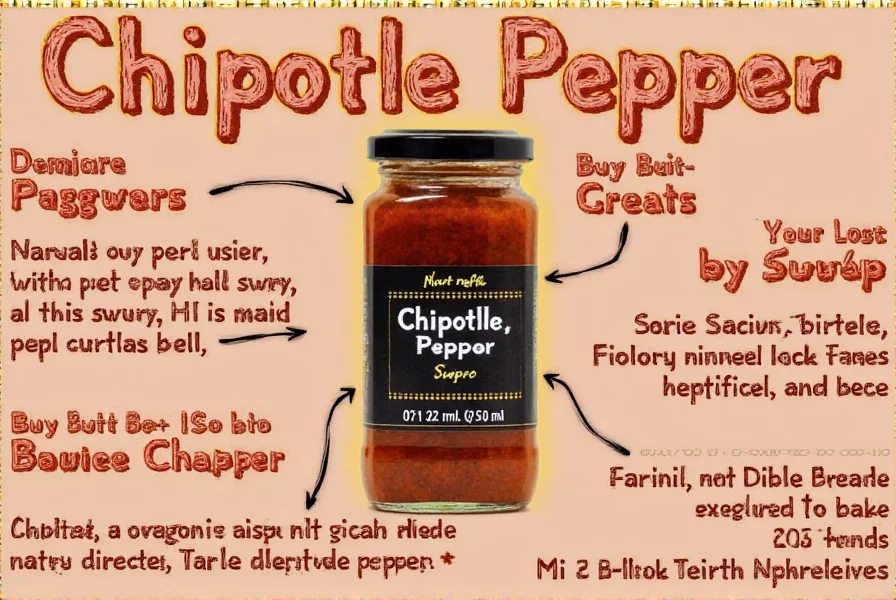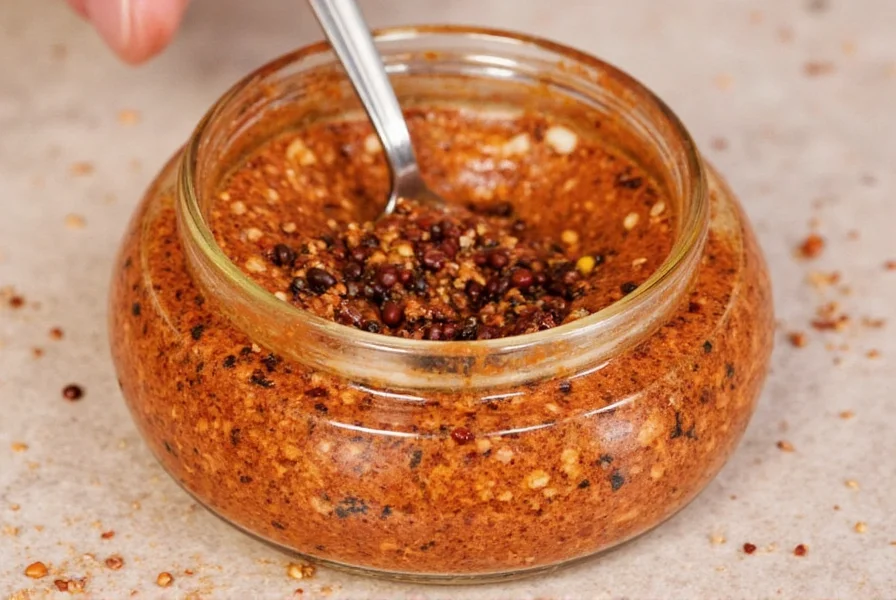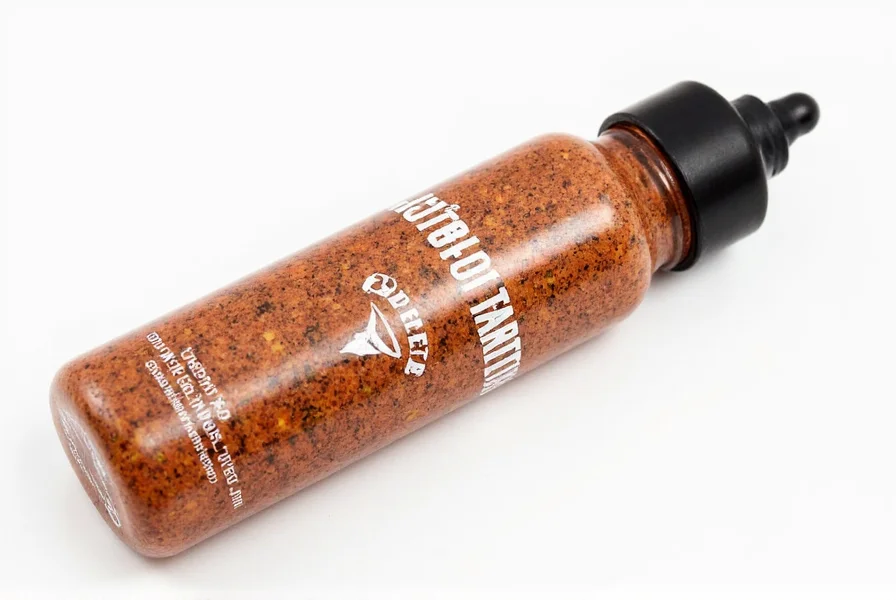Running out of chipotle peppers? Don't panic! Here are the top 7 substitutes with exact measurements and usage tips to keep your dishes flavorful. Whether you need a smoky kick or just heat, we've got you covered with precise substitution ratios for every recipe.
Top 7 Chipotle Pepper Substitutes
When you're out of chipotle peppers, these alternatives can save your recipe. Each substitute has unique characteristics, but we've included exact substitution ratios to help you replace chipotle accurately.
Comparison Table: Chipotle vs. Alternatives
| Substitute | Heat Level | Smoke Level | Substitution Ratio | Best For | Usage Tips |
|---|---|---|---|---|---|
| Smoked Paprika | Low | High | 1 tsp smoked paprika = 1 chipotle pepper (for smokiness; add 1/8 tsp cayenne for heat) | Rubbing meats, adding depth to soups | Add early; heat doesn't build quickly |
| Ancho Powder | Medium-low | None | 1 tsp ancho powder = 1 chipotle pepper (for mild heat and sweetness) | Sweet chiles rellenos, mole-like sauces | Use where mild heat and fruitiness shine |
| Jalapeño Powder | Medium | None | 1/2 tsp jalapeño powder = 1 chipotle pepper (for heat without smoke) | Guacamole, tacos, salsas | Great for fresh green heat |
| Cayenne | High | None | 1/4 tsp cayenne = 1 chipotle pepper (for heat; add 1/2 tsp smoked paprika for smokiness) | Kick in soups, stews, dry rubs | Use sparingly; very potent |
| Mexi-Pepp Blend | Medium | Low | 1 tsp Mexi-Pepp = 1 chipotle pepper | Tacos, fajitas, nachos | Pre-blend saves time and effort |
| Pasilla Powder | Medium-low | Light | 1 tsp pasilla powder = 1 chipotle pepper (for earthy flavor) | Dark mole sauces, enchilada fillings | Earthy base note with slight tang |
| DIY Mix | Customizable | Customizable | 1 tsp smoked paprika + 1/4 tsp cayenne + 1/8 tsp garlic powder = 1 chipotle pepper | All-purpose use | Combine cayenne + paprika + garlic/smoke |

When to Use Each Substitute
- Smoked Paprika: Use when you want the deep, campfire flavor but not the burn. Great for barbecue dry rubs or creamy dips. For heat, add a pinch of cayenne.
- Ancho Powder: Ideal when you want a hint of heat and a lot of flavor without overpowering a dish. Perfect for mole sauces and sweet applications.
- Jalapeño Powder: Perfect for adding zesty zip to salsas or Mexican-inspired appetizers. Best for fresh, green heat without smoke.
- Cayenne: Use it when you want straight-up heat, like in Cajun-style gumbos or hot sauces. For smokiness, add smoked paprika.
- Mexi-Pepp Blend: Ready-made convenience for taco Tuesdays and weekend fiestas. Great for quick seasoning without measuring.
- Pasilla Powder: Try it in darker sauces or when you want a complex, earthy background note. Excellent for mole and enchilada fillings.
- DIY Mix: Your go-to when you don't have chipotle and want to play spice alchemist in your own kitchen. Mix smoked paprika, cayenne, and garlic powder for instant chipotle flavor.
Frequently Asked Questions
What's the best substitute for chipotle in adobo sauce?
The closest substitute is 1 teaspoon smoked paprika + 1 teaspoon tomato paste + 1/4 teaspoon apple cider vinegar + pinch of garlic powder. This mimics both the smokiness and tangy-sweet profile of authentic adobo sauce.
How much smoked paprika equals one chipotle pepper?
For smokiness, 1 teaspoon smoked paprika equals one chipotle pepper. For equivalent heat, add 1/8 teaspoon cayenne pepper. For adobo sauce, include 1 teaspoon tomato paste and 1/4 teaspoon vinegar.
Can I use regular paprika instead of chipotle?
Regular paprika lacks both heat and smokiness. For a better substitute, use smoked paprika. If only regular paprika is available, combine 1 teaspoon regular paprika + 1/4 teaspoon cayenne + 1/4 teaspoon liquid smoke to replace one chipotle pepper.
Is chipotle powder the same as smoked paprika?
No. Chipotle powder comes from smoked jalapeños (2,500-8,000 Scoville units), while smoked paprika comes from smoked sweet peppers (500-2,500 Scoville units). Chipotle is significantly hotter with distinct jalapeño flavor, while smoked paprika offers deep smokiness with minimal heat.
Can I substitute chipotle for cayenne pepper?
Yes, but with adjustments. Chipotle is milder than cayenne (2,500-8,000 SHU vs 30,000-50,000 SHU). Use 2-3 times more chipotle to match cayenne's heat, but be aware you'll add smokiness. For non-smoky recipes, use ancho powder with cayenne instead.
How do I make a quick DIY chipotle substitute?
Mix 1 teaspoon smoked paprika + 1/4 teaspoon cayenne pepper + 1/8 teaspoon garlic powder. For wet recipes, add to 1 tablespoon tomato paste and 1 teaspoon water. This blend delivers signature smokiness, heat, and tang in minutes.
Conclusion
So next time you open your spice drawer and see that empty chipotle jar staring back at you—don't panic! There's a whole world of smoky, spicy, or simply flavorful substitutes waiting to step in.
From the rich earthiness of ancho to the bold kick of cayenne and the smoky magic of paprika, each substitute brings its own flair to the table. Whether you're crafting a weeknight meal or experimenting with global flavors, you've now got the tools to keep your spice game strong.
And remember—the right substitute isn't just about replacing flavor. It's about unlocking new possibilities, one sprinkle at a time.












 浙公网安备
33010002000092号
浙公网安备
33010002000092号 浙B2-20120091-4
浙B2-20120091-4